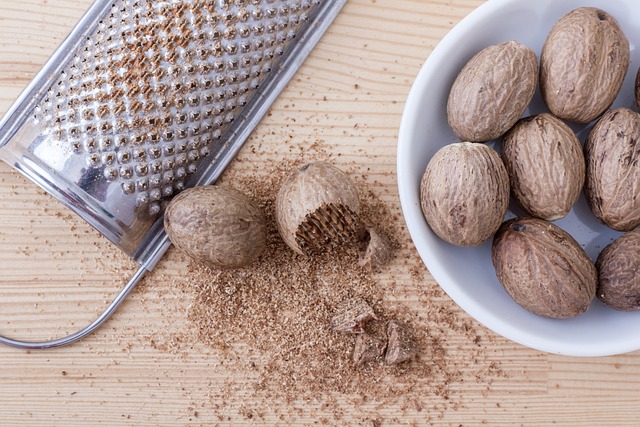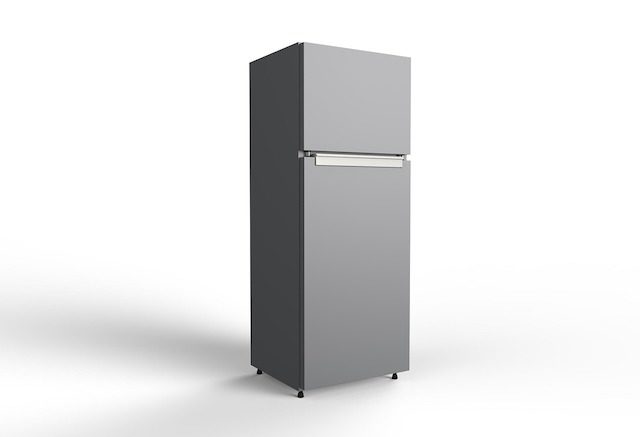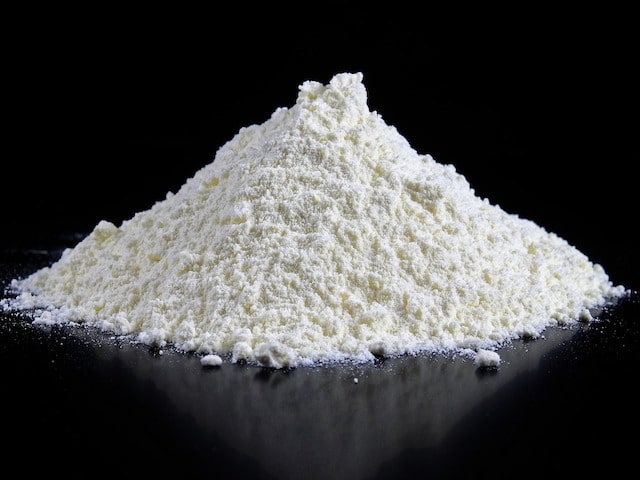We like to think that we have a pretty good handle on not only what’s in our food, medicine, and cleaning cupboards, but also on which items are dangerous and how they all work and interact with each other. However, it’s a complex world, and it’s often hard to keep track of everything at once. Unfortunately, there are dangerous items lurking around our households that even the best of us are often largely unaware of.
10. Bleach and ammonia-based cleaners can release chloramine gas.

Most people don’t realize that many cleaning products actually contain ammonia, and those that do likely don’t contain bleach. Since most people aren’t even aware of how potent ammonia is — or even what it is — many also don’t know that when ammonia and bleach mix together, they form something called chloramine gas, which is often confused with tear gas due to its milder, but similar, effects.
Many people cleaning their homes, especially in the early days of the pandemic, accidentally mixed the two types of cleaning products and began to struggle with watery eyes, respiratory distress, and other symptoms before running to a ventilated area to recover, only to realize later what they had done. The easiest way to avoid this trap is to read the label and simply make sure you are not mixing cleaning products that contain ammonia and bleach. However, it is also important to note that natural sources of ammonia, such as urine, can also cause this effect. That is why experts advise against using cleaning products containing bleach to disinfect toilets, diaper pails, litter boxes, or other areas that may contain a lot of natural ammonia.
9. Too much cinnamon can cause liver poisoning.

Most people are smart enough to avoid the cinnamon challenge, if for no other reason than the choking hazard, but it can still be pretty dangerous even without that kind of abuse. You see, there are two types of cinnamon: Ceylon cinnamon and cassia cinnamon. The two types have an important difference, which is that one contains much more of the active compound that can cause liver damage than the other. Cassia cinnamon, the most commonly sold in stores, contains high levels of coumarin, which can easily cause liver poisoning in humans.
Now, some studies have attempted to use it for therapeutic purposes, such as diabetes, but the evidence is unclear and the risks are high. Scientific studies have shown that the safe amount of cassia cinnamon per day for a person weighing about 160 pounds is less than one and a half teaspoons, unless you want to potentially suffer long-term liver damage.
8. Air fresheners are bad for your pets

People don't usually think much of air fresheners, but they can be quite dangerous for our pets. The problem is that these air fresheners don't just release harmless organic compounds into the air. They actually use what are called volatile organic compounds, which are known to potentially cause cancer in animals. They can certainly cause respiratory distress in poets, even if you don't use them heavily enough to cause death.
To make matters worse, the study found that 133 VOCs were detected across 25 major brands, at least 17 different ones per product. Of these, 24 are toxic under U.S. law, with every product containing at least one of the toxic compounds. That means there are a huge number of potentially dangerous compounds that are very difficult to test properly. Cats are particularly at risk, as not only are they much smaller than us, but they also tend to groom themselves by licking, meaning that anything that gets airborne on their fur can end up in their digestive tract. For dogs, it’s not as much of a problem, but it’s still a reason to be careful.
7. Using deodorant spray too often can kill you

It’s worth noting, first of all, that spray deodorants come with clear warning labels, but the alarming number of incidents where teenagers have died has left some wondering if this is enough. A report from the United Kingdom found 11 deaths linked to this cause between 2001 and 2020. While that’s a small number, it’s far higher than it should be, as it’s an entirely preventable cause of death. These teenagers were either abusing the spray to smell nice instead of showering, as was the case with one British teenager, or to comfort themselves with a pleasant smell, as was the case with another teenager; a British girl who died aged just 14.
To make matters worse, not all death certificates will list this cause as a direct consequence, so the actual number can be difficult to track. There were also 324 deaths during the same period related to inhalation of butane, which is a deadly chemical in body spray fragrances. This certainly leaves the most important question: why would spray deodorants use such a dangerous chemical in the first place, knowing that it would be applied near human skin?
6. Too much nutmeg can cause myristic poisoning.

Most people think of nutmeg as a spice for eggnog and cakes, but it actually contains an active compound called myristicin that can be very potent. This active compound in nutmeg is rarely ingested in large enough quantities to have any effect on us. A little sprinkle on eggnog or a teaspoon on an entire cake is unlikely to have much effect. However, just one or two teaspoons, depending on a person's weight, can cause myristicin poisoning. Now, with the exception of one eight-year-old boy, there are no known deaths in the reports, but it is called toxicity because you tend to get a very nasty fever and high that some people try to use recreationally.
Malcolm X became famous for this, admitting in his biography that he used a matchbox of nutmeg mixed with cold water in prison, and he claimed it hit like "three or four refrigerators." But before anyone gets interested in using nutmeg to emulate Malcolm X (or just to try to get high), he used it because he was in prison and had nothing else, because it really unpleasant high. While there's no conclusive evidence, since it's unethical to test exactly how much will kill you, it's called toxicity for a reason. When you have too much, you get hallucinations and an extremely strong high, but you also get sweating, high fever, nausea, and a feeling of impending doom that can last 24 hours or longer.
5. Household appliance fires are becoming a serious problem

When people think of home fires, they think of things like unattended candles or other carelessness issues, but appliance fires are becoming a big problem, and often they are not the fault of the user. Now, we can’t mention appliance fires without mentioning toasters, but contrary to popular belief, they are one of the lesser causes when it comes to these accidents. The fact that people often forget to clean them doesn’t help, but consumer research agencies have shown that most toaster fires are not the fault of the consumers themselves, and that there is a real measurable problem when it comes to faulty electronics. One of the most common reasons for toaster fires is that they won’t stop after the timer tells them to, continuing to heat up (and burn, and burn) until a fire starts.
However, as bad as toasters are, they are hardly the worst offenders. From 2001 to 2009, consumer protection agencies tallied up all the different appliance fires and found that more than 35,000 were likely caused by a faulty appliance. Of those, they were fairly certain that more than 15,000 were actually caused by an electrical problem with the appliance. In those tallies, they found that ranges, dishwashers, dryers, refrigerators, and other large appliances actually caused far more fires than small appliances like toasters. Experts believe that these electrical problems are often due to one bad part getting into the mix, which can cause appliances to overheat, refuse to turn off when they should, or turn on without warning.
4. Raw flour is often a carrier of E. coli

Many people are dismissive of the dangers of raw flour and worry about raw dough and think only of eggs. What they may not realize is that scattering raw flour around the kitchen is almost as bad as doing the same with raw chicken. The problem is that flour that hasn’t been cooked into something yet – even if we don’t think of it that way – is actually raw food and can often contain E. coli. This is, of course, the contaminant that often causes recalls of foods like lettuce. This means that, as a rule of thumb, you really shouldn’t use raw dough as a toy for kids to make clay figures, nor should you let it spread around your kitchen without thoroughly disinfecting it, and you really should never eat it. Not that we expect people to gobble up spoonfuls of flour, but still.
Now, some people have heard of raw cookie dough that is sold this way and is safe to eat. This dough is often eggless and contains flour that has been specially cooked before being added to the cookie dough. Some people may think that this is safe to do at home, so they can make their own cookie dough, but in fact, this is not recommended by food experts. They simply do not believe that most home processes cook the flour adequately enough to be sure that any contaminants such as E. coli are removed.
3. Moderate amounts of licorice on a regular basis can kill you

Many people think little of black licorice and enjoy it as a snack. But overuse can easily be fatal, as it contains a dangerous compound called glycyrrhizic acid. The problem is that this compound in real licorice, while beneficial in small amounts, can be very dangerous in large amounts. Many people, either eating it as a regular snack or trying to use it in supplements or teas for its health benefits, have accidentally overdosed on it and put their health at risk. More than two ounces a day for two weeks is more than enough to start causing noticeable health problems, including high blood pressure and extremely low potassium levels.
Now, while fatalities are relatively rare, they do happen from time to time and usually tend to affect older people aged 50 and above. Unfortunately, aside from the fact that it appeals more to older people and the fact that the risks are little known, its health effects are more worrisome to an older person than to a younger, healthier person. Heart arrhythmia, high blood pressure, abnormal blood acidity; and low potassium levels may be bad for a younger person, but they are much more likely to be fatal for an older person.
2. Wedding crashers can be funny, but eye drops are no laughing matter.

Scene in "Uninvited Guests" , where a man swallows eye drops and ends up in the toilet, is played for laughs, and most people consider it a harmless joke. It is important to understand that the effects of this drug in real life are much worse when consumed than just an uncomfortable time on the toilet. The thing is, the eye drops contain something called tetrahydrozoline, which is very useful for relieving redness and irritation of the eyes, but when ingested or injected, causes dangerous drops in blood pressure and heart rate. In fact, not only is it deadly, but the gastrointestinal upset side effect we see in the popular movie is not actually a common side effect at all.
A more common side effect of taking too much, especially over a long period of time, is death, as extremely low blood pressure and heart rate can kill you if not treated medically. In some cases, people have killed others by using eye drops as poison, and in one case, a woman was even convicted of killing her husband by poisoning his drink with eye drops, and was sentenced to 25 years in prison.
1. You should monitor your tuna intake due to mercury levels

Most people don’t think much of this, probably because of the small size of the can, but tuna is actually quite a large fish. So the government has guidelines on how much we should eat to avoid mercury build-up. eat that much, they shouldn’t eat any other fish that week. Now you’ll notice that light tuna is specifically mentioned here, and that’s because it’s actually different in terms of mercury levels than albacore or white tuna. Albacore tuna typically contains about three times as much mercury as smaller tuna, like skipjack, which is typically found in light tuna. This means that if you like the more expensive white tuna, you really shouldn’t eat more than one can a week, and again, you shouldn’t eat any other fish in the same week.
This advice, however, is for adults. The recommendation for children and pregnant or breastfeeding mothers is that they should ideally avoid tuna altogether. If they do eat it at all, they should especially avoid white tuna and stick to one can of light tuna. However, children and new mothers (and other adults) are still advised to regularly include low-mercury fish in their diets rather than just eating beef and poultry products due to concerns about mercury poisoning.













Оставить Комментарий